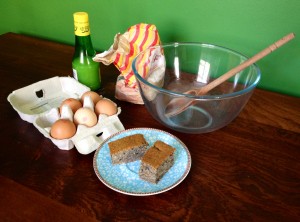 Perhaps cookery is already one of your editorial specialisms, or it may be an area you’d like to try. In many ways, the same rules apply as for editing any other material – the text needs to be clear, accurate and consistent. However, there are some particular things to watch out for. Here are some tips for editing or proofreading recipes.
Perhaps cookery is already one of your editorial specialisms, or it may be an area you’d like to try. In many ways, the same rules apply as for editing any other material – the text needs to be clear, accurate and consistent. However, there are some particular things to watch out for. Here are some tips for editing or proofreading recipes.
1. Know your way around a kitchen/Enjoy food
As with any other specialist area, how deeply you need to be immersed in the subject as an editor or proofreader is open to debate. I would suggest that it is necessary to be a competent and reasonably adventurous cook yourself, though, and a love of food definitely helps. You will often need to imagine carrying out a particular task as you read the recipe to check for sense, and it is useful to have a good awareness of kitchen equipment and how to use it, as well as a wide range of ingredients.
2. Have a feel for measurements
Although as an editor you are not required to test the recipes (unless you want to, which does happen; see number 8), you do need to sense-check them as you go, and this includes spotting any silly quantities. Can you picture 100g of various different ingredients? Do you know what 2 litres of liquid looks like? Do you understand the relative proportions of ingredients that usually go into a cake, or pastry, or a stew?
3. Account for every single ingredient
Every ingredient that is listed needs to be used – even if not all at once. In the same way, every ingredient that is mentioned in the instructions needs to be listed. Usually, publishers will want the ingredients listed in the order in which they are used, but the house style may specify exceptions to this. For example, salt and pepper often come at the end of the list.
4. Tie up loose ends (or ask the author to do so)
As well as making sure every ingredient mentioned in the instructions is listed (and vice versa), you need to make sure every ingredient’s story is followed through to its conclusion. Don’t leave the reader wondering what happened to that pastry that was rolled out two steps ago, or the egg that’s been beaten and set aside … forever.
5. Apply logic
The oven is often preheated at the start of the recipe – but this makes no sense if the preparation begins the day before the actual cooking. And some ingredients need to be prepared far in advance, while others would suffer. Although consistency is extremely important (see the next point), you also need to apply a generous dash of common sense when it comes to expressing a recipe sensibly. You can’t apply a blanket rule to every eventuality. This is where it helps to be able to picture the process that is being described.
6. Maintain consistency
Editors are always concerned with consistency. In cookery, particular things to watch out for include descriptions of ingredients (is it chopped onion – or onion, chopped?); instructions for particular processes that crop up again and again (such as steaming a pudding); use of measurements (obviously metric and imperial are not used interchangeably, but also make sure you don’t switch between teaspoons and 5ml, for example); names of things (capitals can be tricky; think of cheese or wine) and naming of recipes (does the recipe actually contain all the things mentioned in the title, and in what proportions?).
7. Tread the fine line between preserving voice and adhering to house style
Many cookery book publishers will supply an extensive house style (which is helpful, but do allow time to absorb it). At the same time, many cookery writers, in common with all other writers, will have their own particular way of expressing themselves. If you’re copy-editing, it can be a real challenge to strike a balance between toning down the wildest authorial excesses while maintaining that distinctive voice (it may be a voice that readers are familiar with the sound of, too), and also beating everything into style guide submission as far as possible.
8. Work as far away from the kitchen as possible
Trust me – you will get hungry. Especially if there are pictures …
This list is not exhaustive – it’s a starting point. Perhaps you have other suggestions of what to look out for?
 Posted by Liz Jones.
Posted by Liz Jones.
Proofread by Susan Walton.
The views expressed here do not necessarily reflect those of the CIEP.

Great article. Thanks for the tips.
Pingback: The Nitpicker’s Nook: August’s linguistic links roundup « BoldFace
Great tips. Makes me wish I was still editing…
I once read a recipe for gin and tonic sorbet which included neither gin nor tonic. I still wonder about that.